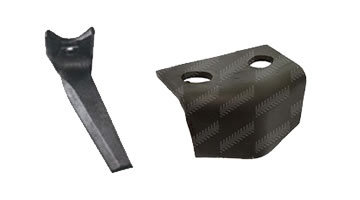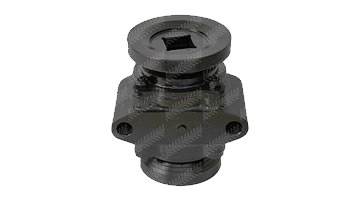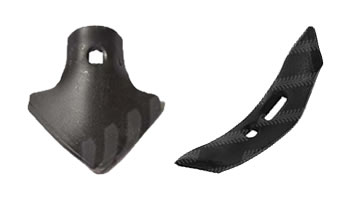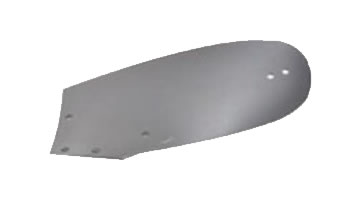Search
Search
Enter part no, manufacturer part no, machine model or description
Browse by Application
Find parts to fit your specific Tractor Make/Model or Engine
Browse by Category
Select Engine Make
Select Vehicle Make
Beyond Ploughing: Exploring the Different Techniques of Tillage
What is tillage?
Tillage refers to the preparation of soil for planting crops by mechanical means such as plowing, harrowing, or tilling. It involves breaking up and loosening the soil to create a suitable seedbed, removing weeds and debris, and incorporating organic matter such as manure or compost. Tillage is an important part of agriculture, as it helps to improve soil structure and fertility, increase water infiltration and retention, and reduce soil erosion. However, excessive tillage can also have negative effects on the soil, such as compaction, loss of organic matter, and decreased biodiversity.

Types of tillage
There are two main types of tillage: primary and secondary.
Primary Tillage
Primary tillage is the initial soil preparation stage that involves deep ploughing or digging to break up the soil, loosen compacted layers, and bury crop residues. Primary tillage is typically done using heavy-duty tillage equipment such as mouldboard ploughs, chisel ploughs, or deep tillers. This type of tillage is usually done before planting a new crop, and its main objective is to create a suitable seedbed for the crop.
Secondary Tillage
Second tillage, also known as secondary tillage or seedbed preparation, is a follow-up operation after primary tillage. It involves further refining the soil structure, levelling the field, and creating a smooth and even seedbed for planting. Second tillage is done using lighter equipment such as disc harrows, field cultivators, or power tillers, which are designed to work the soil more shallowly than primary tillage equipment. The goal of secondary tillage is to create a favourable environment for germination, seedling emergence, and crop growth, by breaking up clods, removing weeds, and incorporating any fertilizers or soil amendments.
Tillage systems and machinery
There are a lot of different tools and machines that are used to till soil. Each comes with its own advantages and disadvantages. Choosing the best tillage system for the job at hand depends on factors like the type of soil and the crops that are to be planted. The decision is also affected by the layout of the land and personal preferences.
There are several types of tillage systems and machinery used in agriculture, each with their own advantages and disadvantages. Here are some common examples:
- Conventional Tillage: This system involves ploughing the soil to a depth of 6 to 10 inches using mouldboard ploughs or disc ploughs. The soil is then harrowed and levelled using a variety of equipment such as disc harrows, field cultivators, and power tillers.
- Reduced Tillage: This system involves leaving more crop residues on the soil surface to reduce erosion and improve soil health. Reduced tillage may involve chisel ploughing, strip-tilling, or using minimum-till or no-till equipment that disturbs the soil less.
- No-Till: This system involves planting seeds directly into undisturbed soil, without tilling or ploughing. The soil is left covered with crop residues, which act as a protective layer against erosion and help to build soil organic matter.
- Vertical Tillage: This system uses specialized equipment such as vertical tillage disks, which cut narrow vertical slits into the soil without inverting it. This helps to break up compacted layers and improve soil structure, while leaving most of the crop residue on the soil surface.
- Rotary Tillage: This system uses a rotary tiller or rototiller to break up and mix the soil. These machines have rotating blades or tines that cut into the soil and chop up crop residues, producing a fine seedbed for planting.
In addition to these tillage systems, there are also a variety of machinery used in tillage, such as ploughs, harrows, cultivators, and tillers. These machines can be powered by tractors or other farm machinery, and can vary in size and complexity depending on the tillage system being used and the size of the farm operation.
We offer a wide range of spare parts for these machines at MalpasDirect, with options to suit most leading makes and models.
Discover the range of tillage parts at MalpasDirect
Active Soil Tillage
Active soil tillage refers to the mechanical manipulation of soil using tools or equipment to prepare the soil for planting or to manage weeds and other pests. This can include various types of tillage, such as plowing, disking, harrowing, and chiseling, which all involve breaking up and aerating the soil to promote better root growth and water infiltration.
Active soil tillage can have both positive and negative impacts on soil health and agricultural productivity. On the one hand, it can help to reduce soil compaction, increase nutrient availability, and promote better seed-to-soil contact, all of which can lead to improved crop yields. On the other hand, excessive or improper tillage can also cause soil erosion, loss of organic matter, and disruption of soil structure, which can have negative impacts on soil health and productivity over the long term.
Overall, the decision to use active soil tillage should be based on a careful assessment of the specific soil and crop conditions, as well as the potential benefits and risks associated with different types of tillage practices. In recent years, many farmers and researchers have been exploring alternative tillage practices, such as conservation tillage, reduced tillage, and no-till farming, which aim to minimize soil disturbance and preserve soil health while still achieving high crop yields.

Passive Soil Tillage
Passive soil tillage, also known as minimum or reduced tillage, refers to a range of agricultural practices that involve disturbing the soil as little as possible in order to preserve soil structure and reduce soil erosion.
Passive soil tillage practices typically involve using specialized equipment, such as no-till drills or seeders, which place seeds directly into the soil without the need for plowing or other types of soil disturbance. Other passive tillage methods include the use of cover crops, crop rotation, and reduced tillage depth to promote soil health and fertility.
Passive soil tillage has several benefits over active soil tillage practices. By reducing soil disturbance, passive tillage can help to conserve soil moisture, reduce erosion, and preserve soil structure, all of which can lead to improved soil health and long-term agricultural productivity. Passive tillage can also reduce fuel and labor costs associated with tillage, as well as promote greater biodiversity and carbon sequestration in the soil.
However, passive soil tillage also has some limitations. For example, it may be less effective at controlling weeds and other pests than active tillage, and may require the use of herbicides or other chemical inputs to maintain crop yields. Additionally, passive tillage may not be suitable for all soil types or cropping systems, and may require specialized equipment or management practices to be effective.
What are the advantages of carbide tools for tillage machinery
Carbide tools have several advantages for tillage machinery compared to traditional steel tools. Here are some of the main advantages:

Hardness and Durability
Carbide is an extremely hard and wear-resistant material that can withstand the abrasive and high-impact conditions of tillage machinery. Carbide tools can last up to 10 times longer than steel tools, reducing downtime and replacement costs.

Improved Cutting Performance
Carbide tools have a sharper cutting edge than steel tools, allowing them to cut through soil and other materials more efficiently. This improves tillage performance and reduces fuel consumption.

Reduced Maintenance
Carbide tools require less maintenance than steel tools, as they are less likely to break or wear down. This reduces the need for sharpening and replacement, saving time and money.

Resistance to Corrosion
Carbide is resistant to corrosion and rust, which can help to extend the life of the tool and prevent contamination of the soil.



